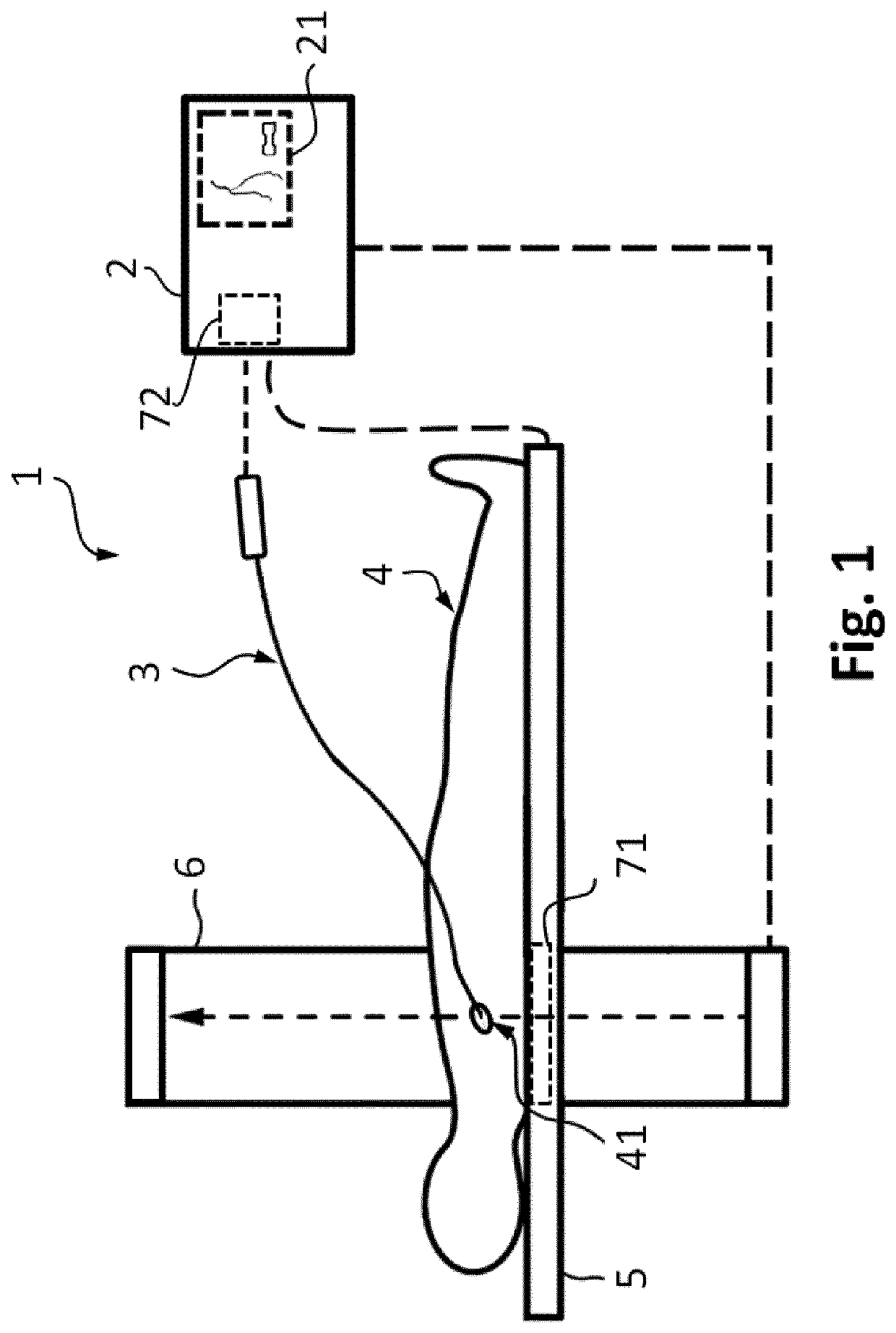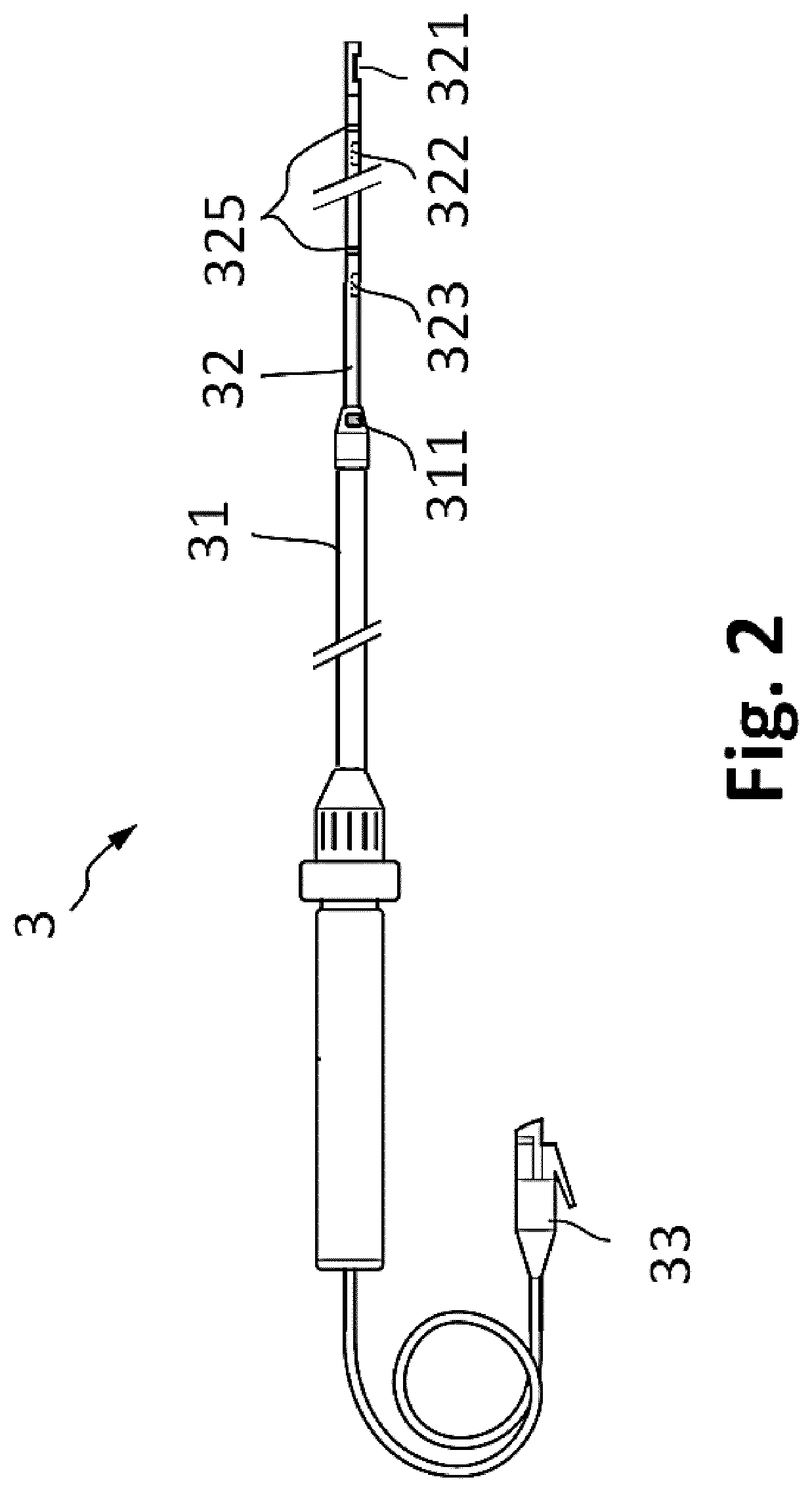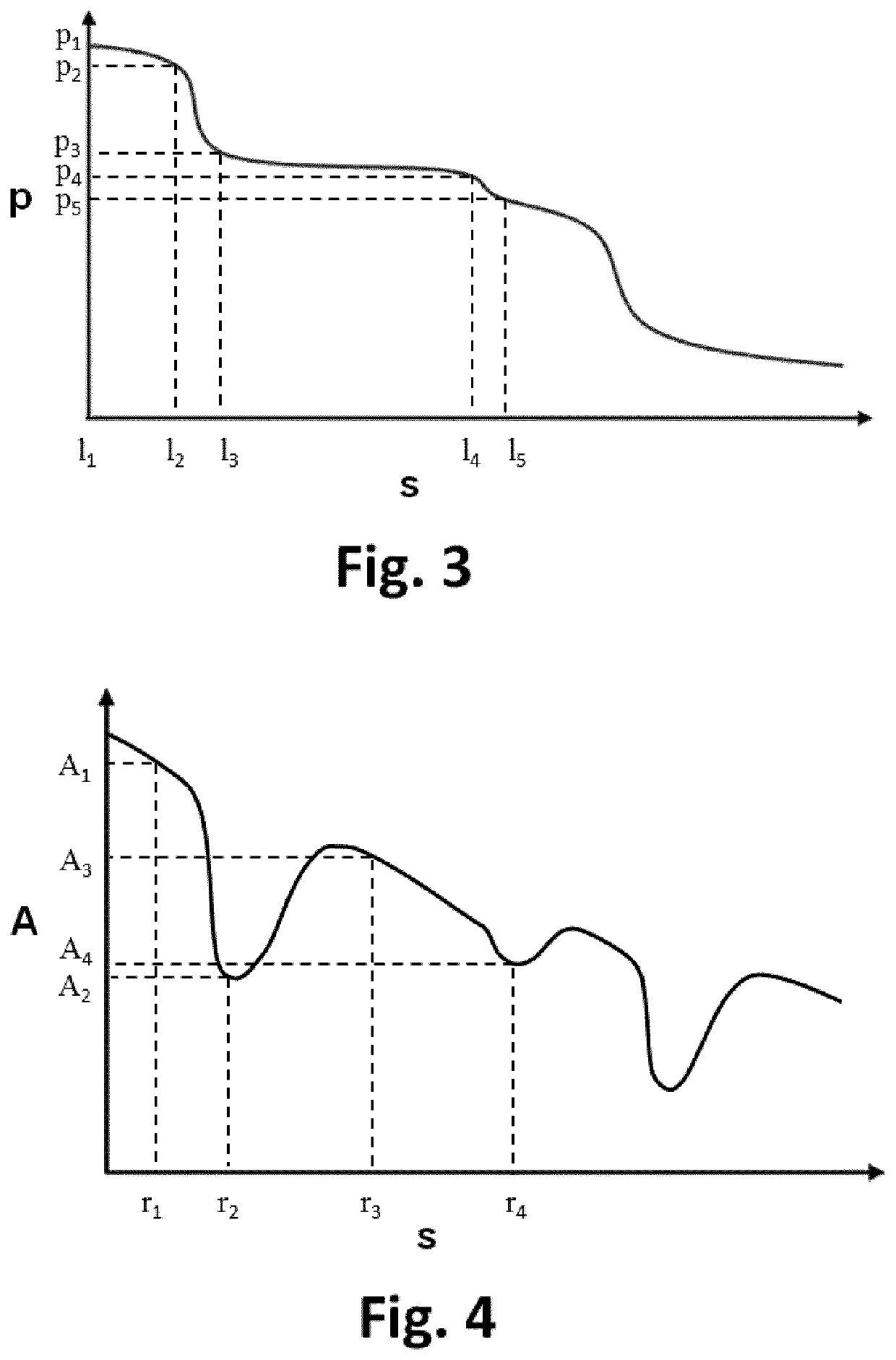Apparatus for vessel characterization
a technology of apparatus and stenosis, applied in the field of apparatus, system and method of stenosis of vessels and vessel modeling, can solve the problems of obstructed visual evaluation of the stenotic region, unable to accurately estimate the cross-sectional shape of the stenosis, etc., and achieve the effect of simple construction
- Summary
- Abstract
- Description
- Claims
- Application Information
AI Technical Summary
Benefits of technology
Problems solved by technology
Method used
Image
Examples
Embodiment Construction
[0042]In FIG. 1 an embodiment of the system 1 for characterization of a vessel of a living being 4 is presented, wherein the living being may be a person or an animal. The system 1 comprises an apparatus 2 and an instrument 3, wherein the instrument is configured to provide pressure measurement signals from within a vessel of a portion 41 of the circulatory system of the patient 4, and the apparatus 2 is configured to ascertain characteristics of the vessel based on the pressure measurements. The apparatus 2 comprises a display 21 for rendering the characteristics of the vessel. Alternatively, the apparatus may be configured to provide signals to an external display on which the designated characteristics are presented to the physicians.
[0043]In an embodiment, the system comprises an imaging unit 6 for acquiring two-dimensional or three-dimensional morphological information of the vessel structure of interest upon injection of a contrast agent bolus into the targeted vasculature. Th...
PUM
 Login to View More
Login to View More Abstract
Description
Claims
Application Information
 Login to View More
Login to View More - R&D
- Intellectual Property
- Life Sciences
- Materials
- Tech Scout
- Unparalleled Data Quality
- Higher Quality Content
- 60% Fewer Hallucinations
Browse by: Latest US Patents, China's latest patents, Technical Efficacy Thesaurus, Application Domain, Technology Topic, Popular Technical Reports.
© 2025 PatSnap. All rights reserved.Legal|Privacy policy|Modern Slavery Act Transparency Statement|Sitemap|About US| Contact US: help@patsnap.com



